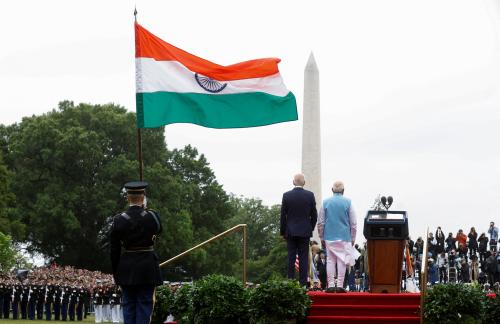Fifteen months before the 2012 U.S. presidential election, the campaign season is already under way. Numerous Republican candidates for the presidential nomination have already held two debates; the Iowa State Fair has produced, not just the traditional cow sculpted in butter, but a “straw poll” among Republicans willing to pay $35 for casting a ballot; Michele Bachmann has been boosted by her straw poll victory, and two less fortunate candidates have already dropped out. On the Democratic side, President Obama does not face a serious challenge for the nomination, but his bus tour of the Midwest has all the earmarks of an election campaign. Tip O’Neill, former Speaker of the U.S. House of Representatives and one of America’s legendary political figures, famously said that “all politics is local,” and these early campaign markers underline the truth of this statement. But as the election season lurches through the next year and a quarter, both the campaign and its eventual results will have an impact outside the United States. Managing U.S.-India ties during that time will require even more than the usual steady nerves.
Domestic Issues
The brawl over the August 2 extension of the U.S. debt ceiling and its aftermath provide a preview of some of the key domestic issues. Both sides will be trying to position themselves as defenders of fiscal rectitude. Republicans hope that the public will forget how close they came to provoking a default; Democrats will be trying to keep Republican recklessness in the public eye. So far, most Republican candidates are sticking to the “new orthodoxy” that rejects all revenue increases, but they may yet face internal struggles if polls continue to show that the hard line Tea Party is scaring the voters. Democrats will hold fast to their view that the deficit can’t be tackled without expanded revenues. Their internal battle, as well as their battle with Republicans, will centre on the already limited “social safety net” provided by the government’s programs for old age pensions (Social Security), medical insurance (Medicare and the Obama health care reform), and medical care for the poor (Medicaid).
These domestic issues will monopolize the attention of the U.S. government and especially of the U.S. Congress for extended periods. Expect at least one cliffhanger in late November, when the next stage of the deficit reduction package is set to come up. Further showdowns are possible over the budget for Fiscal Year 2012, which starts October 1. On each of these occasions, there may be several weeks in which little other business gets done in official Washington.
Fiscal issues have caused and will cause meltdown and gridlock in the Congress. But the fulcrum on which the election turns will be not budgets but jobs, with fiscal problems providing ammunition for each party to use against the other. Both parties have more complaints than remedies. The Republicans argue that cutting spending will restore business confidence (and ignore the fact that reduced spending will also cost jobs). President Obama has promised a jobs plan in early September, and early hints refer to tax incentives for businesses hiring new workers. If the Democrats will propose any form of public works program, they can expect derisive Republican rejection. But given the fiscal constraints the U.S. government faces, none of these programs — even assuming they can be enacted, which is by no means certain — is likely to make a major pre-election difference in an unemployment rate that has topped nine per cent since May 2009.
The stakes are high, and not just in the United States. The revival of the U.S. economy, with its ability to generate investment and buy imports from abroad, is the tonic the rest of the world is waiting for. This includes India, for whom the United States is the largest export market, and where international trade now represents over 40 per cent of GDP. The focus on jobs will create an unpromising political environment for “job-killing” initiatives. This will make trade liberalization very difficult (especially since the U.S. constitution reserves all power over international trade to the Congress). Interestingly, however, the one international trade initiative that looks as if it might move forward despite this nasty climate is the approval of pending free trade agreements with Korea, Colombia and Panama. This suggests that it is possible to create a support base for trade-opening agreements — but that this needs to be taken as a long-term objective, with great care to providing benefits to both sides.
Insofar as explicitly international issues figure in the election campaign, they will play out against this background. India has two advantages here. First, Indian-Americans’ political loyalties are split between the two parties, so both will be trying to attract their votes and, perhaps more importantly, their campaign contributions. Second, there has been little difference between Republican and Democratic administrations’ policies toward India. Republican and Democratic administrations created the emerging partnership, and both sides support a stronger U.S.-India relationship. The Republican campaign is unlikely either to attack Obama’s overall approach to India or to propose a different one.
The election season will almost certainly provide the occasion for heated discussions of issues relevant to India, however. Four will be particularly important.
Afghanistan: The U.S. war in Afghanistan has become very unpopular, and at this point Democrats are more eager than Republicans to make 2014 a hard deadline for removing most U.S. troops. The administration is urgently trying to create a process both within Afghanistan and with its neighbors that preserves some degree of stability in the Afghan set-up after that time. The campaign will intensify the pressure on the administration to find something it can call successful. Republicans will try to take advantage of widespread unhappiness with “Obama’s war” while avoiding any serious discussion of what they would do differently.
Pakistan: The U.S.-Pakistan relationship is in crisis, with mistrust at high levels in both countries. The Obama administration as well as the principal Republicans who are speaking out on foreign affairs are convinced that some form of U.S.-Pakistan partnership must be salvaged to avoid disaster both in Pakistan and in Afghanistan. Here, the action will be both inside the administration and in Congress, more than on the campaign trail. The administration will be scrambling to avoid Republican charges of mismanaging its most important foreign policy issues.
Economic ties with India: U.S.-India ties are not controversial, and from the U.S. perspective they pose less danger to U.S. foreign policy than the previous two issues. However, the economic relationship could become a more insistent source of complaints during the election season. There is widespread disappointment over the inability to resolve trade and investment issues with India that trouble U.S. businesses. Expect the political campaign to bring on increasingly vocal and insistent calls for expanding market access and lifting of investment caps in sectors like insurance. Candidates from both parties will promise to insist on Indian movement in these areas. We may well hear renewed talk about limiting outsourcing in government procurement (though historically, this issue has generated more talk than action).
Geostrategy: The big idea that shapes much of the current geopolitical debate in the United States is the rise of Asia, especially China and India. There is broad agreement China represents a major strategic challenge; that India is a democratic country whose friendship is important to the United States; and that the United States needs to engage both. This is the geopolitical concept behind the widespread U.S. support for partnership with India. This big picture is too diffuse to play much of a role in the political campaign. However, in settings like the traditional debates between presidential candidates, participants will be asked how they propose to deal with China. Republicans will focus a bit more on the military tools for doing this, and Democrats will highlight the economic dimension. India will probably generate fewer questions.
Those interested in building up the U.S.-Indian partnership over the long term need to avoid being distracted by the extraordinarily long U.S. campaign. The key to a more productive future for U.S.-India relations is, in our view, the revival of the U.S. economy. It follows that how candidates prepare to staff the top financial and economic positions in their administration, and how they are able to deal with both the fiscal problem and the job crunch, are critical not just for American voters but for their friends in India.
In the short term, the challenge will be maintaining attention and focus on the U.S.-India relationship during the long U.S. campaign season. This is not a partnership that does well if neglected. Even during a campaign that puts most of its attention on other issues, officials steering the ship of state in India and the United States need to keep moving forward on the issues that have roiled the waters. If they can resolve a few of the long-standing issues that trouble both countries, the next administration — of whatever party — will be better placed to pursue its larger ambitions for U.S.-India ties.



Commentary
Op-edU.S. Election Season: How Does India Fit In?
August 23, 2011